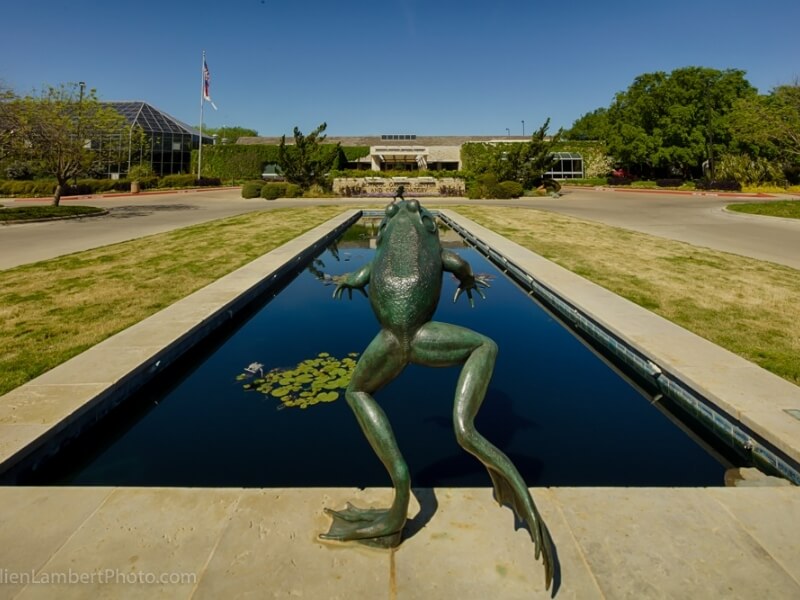Mapping Rare Plants on Roadsides
BRIT is partnering with Tarleton State University to create predictive habitat maps of rare species for the Texas Department of Transportation. BRIT is working to better understand the habitat needs and preferences of 17 rare species by examining herbarium specimens and the scientific literature. This information will be mapped to show areas where each of the rare species is most likely to occur. Texas Department of Transportation will use these maps to improve their ability to protect rare species which grow along their roadways. For several of these rare species, roadsides represent a significant portion of the known populations. Conserving them in these locations is critical to the species survival.
Why do rare plants grow on roadsides?
Roadsides, particularly in rural areas, are some of the only land that is not heavily impacted by human use. Periodic mowing serves to prevent the growth of woody vegetation on these roadsides, maintaining the native open prairie vegetation. The lack of cattle allows plants that are particularly tasty to thrive. For sensitive plant species, this native plant oasis is often the ideal habitat!
Research Team
Kim Norton Taylor Conservation Research Botanist
Erin Flinchbaugh Conservation Program Assistant
Carousel items
-
Collections Insights
Collections Insights brings together three distinct perspectives that reflect the depth and richness of botanical collections—from the relationship between herbaria and libraries to the hidden treasures of archival holdings, and the personal narratives of those working in the field.
-
The Sherwin Carlquist Collection
The Sherwin Carlquist Collection encapsulates more than 30 years of important botanical research conducted by the renowned mid-century American botanist.
-
The Oliver G. Burk Children’s Collection
The Oliver G. Burk Children’s collection is a treasure of both rare and new books on botany and natural history.
-
Library Archives Collection
The BRIT Library houses one of the largest and finest collections of botanical works in the southwestern United States.
-
Rare Book Room Collection
The Discovery Fund Rare Book Room includes an exceptional collection of books and limited-edition items, some of which were published over 200 years ago and are fragile, scarce, or valuable.
-
The Arader Natural History Collection of Art
As one of the newer additions to the Library, the Arader Natural History Collection of Art celebrates art, science, and the beauty of plants and nature.
-
The Stansbery Collection for Botanical Art
Through the generosity of Will and Kay Stansbery, the BRIT library offers access to a collection of books focusing on botanical art and illustration, and art history.
-
Discovery Resources
Explore a curated collection of educational and digital resources from the BRIT Library and beyond.
-
BRIT Library History
In large measure, the library of the Botanical Research Institute of Texas owes its existence to Lloyd H. Shinners and his vision of the future.
-
BRIT Library History
In large measure, the library of the Botanical Research Institute of Texas owes its existence to Lloyd H. Shinners and his vision of the future.
-
BRIT Library History
In large measure, the library of the Botanical Research Institute of Texas owes its existence to Lloyd H. Shinners and his vision of the future.
-
BRIT Library History
In large measure, the library of the Botanical Research Institute of Texas owes its existence to Lloyd H. Shinners and his vision of the future.
-
BRIT Library History
In large measure, the library of the Botanical Research Institute of Texas owes its existence to Lloyd H. Shinners and his vision of the future.
-
BRIT Library History
In large measure, the library of the Botanical Research Institute of Texas owes its existence to Lloyd H. Shinners and his vision of the future.
-
BRIT Library History
In large measure, the library of the Botanical Research Institute of Texas owes its existence to Lloyd H. Shinners and his vision of the future.
-
BRIT Library History
In large measure, the library of the Botanical Research Institute of Texas owes its existence to Lloyd H. Shinners and his vision of the future.
-
BRIT Library History
In large measure, the library of the Botanical Research Institute of Texas owes its existence to Lloyd H. Shinners and his vision of the future.
-
BRIT Library History
In large measure, the library of the Botanical Research Institute of Texas owes its existence to Lloyd H. Shinners and his vision of the future.
-
BRIT Library History
In large measure, the library of the Botanical Research Institute of Texas owes its existence to Lloyd H. Shinners and his vision of the future.
-
BRIT Library History
In large measure, the library of the Botanical Research Institute of Texas owes its existence to Lloyd H. Shinners and his vision of the future.
-
BRIT Library History
In large measure, the library of the Botanical Research Institute of Texas owes its existence to Lloyd H. Shinners and his vision of the future.
-
BRIT Library History
In large measure, the library of the Botanical Research Institute of Texas owes its existence to Lloyd H. Shinners and his vision of the future.
-
BRIT Library History
In large measure, the library of the Botanical Research Institute of Texas owes its existence to Lloyd H. Shinners and his vision of the future.
-
BRIT Library History
In large measure, the library of the Botanical Research Institute of Texas owes its existence to Lloyd H. Shinners and his vision of the future.
-
BRIT Library History
In large measure, the library of the Botanical Research Institute of Texas owes its existence to Lloyd H. Shinners and his vision of the future.
-
BRIT Library History
In large measure, the library of the Botanical Research Institute of Texas owes its existence to Lloyd H. Shinners and his vision of the future.
-
Participate
In a world of increasing demands and shrinking dollars, you can also support our mission by sponsoring specific resources and preservation efforts.


